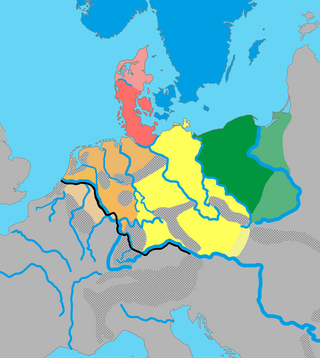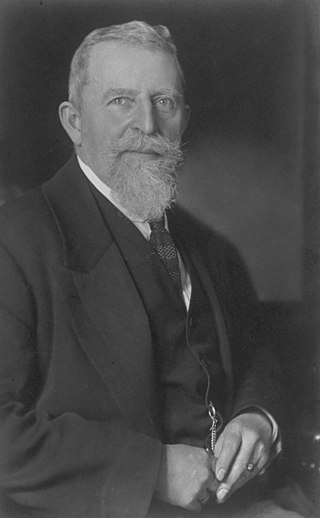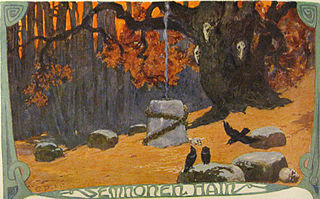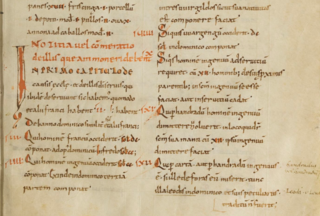
The Germanic peoples were historical groups of people that once occupied Northwestern and Central Europe and Scandinavia during antiquity and into the early Middle Ages. Since the 19th century, they have traditionally been defined by the use of ancient and early medieval Germanic languages and are thus equated at least approximately with Germanic-speaking peoples, although different academic disciplines have their own definitions of what makes someone or something "Germanic". The Romans named the area belonging to North-Central Europe in which Germanic peoples lived Germania, stretching east to west between the Vistula and Rhine rivers and north to south from southern Scandinavia to the upper Danube. In discussions of the Roman period, the Germanic peoples are sometimes referred to as Germani or ancient Germans, although many scholars consider the second term problematic since it suggests identity with present-day Germans. The very concept of "Germanic peoples" has become the subject of controversy among contemporary scholars. Some scholars call for its total abandonment as a modern construct since lumping "Germanic peoples" together implies a common group identity for which there is little evidence. Other scholars have defended the term's continued use and argue that a common Germanic language allows one to speak of "Germanic peoples", regardless of whether these ancient and medieval peoples saw themselves as having a common identity. While several historians and archaeologists continue to use the term "Germanic peoples" to refer to historical people groups from the 1st to 4th centuries CE, the term is no longer used by most historians and archaeologists for the period around the Fall of the Roman Empire and the Early Middle Ages.

Weregild, also known as man price, was a precept in some historical legal codes whereby a monetary value was established for a person's life, to be paid as a fine or as compensatory damages to the person's family if that person was killed or injured by another.

The Cherusci were a Germanic tribe that inhabited parts of the plains and forests of northwestern Germany in the area of the Weser River and present-day Hanover during the first centuries BC and AD. Roman sources reported they considered themselves kin with other Irmino tribes and claimed common descent from an ancestor called Mannus. During the early Roman Empire under Augustus, the Cherusci first served as allies of Rome and sent sons of their chieftains to receive Roman education and serve in the Roman army as auxiliaries. The Cherusci leader Arminius led a confederation of tribes in the ambush that destroyed three Roman legions in the Teutoburg Forest in AD 9. He was subsequently kept from further damaging Rome by disputes with the Marcomanni and reprisal attacks led by Germanicus. After rebel Cherusci killed Arminius in AD 21, infighting among the royal family led to the highly Romanized line of his brother Flavus coming to power. Following their defeat by the Chatti around AD 88, the Cherusci do not appear in further accounts of the German tribes, apparently being absorbed into the late classical groups such as the Saxons, Thuringians, Franks, Bavarians, and Allemanni.

Germania, also called Magna Germania, Germania Libera, or Germanic Barbaricum to distinguish it from the Roman province of the same name, was a historical region in north-central Europe during the Roman era, which was associated by Roman authors with the Germanic people. The region stretched roughly from the Middle and Lower Rhine in the west to the Vistula in the east. It also extended at some point as far south as the Upper and Middle Danube and Pannonia, and to the known parts of southern Scandinavia in the north. Archaeologically, these people correspond roughly to the Roman Iron Age of those regions. While dominated by Germanic people, Magna Germania was also inhabited by a few other Indo-European people.

The Bructeri were a Germanic tribe in Roman imperial times, located in northwestern Germany, in present-day North Rhine-Westphalia. Their territory included both sides of the upper Ems and Lippe rivers. At its greatest extent, their territory apparently stretched between the vicinities of the Rhine in the west and the Teutoburg Forest and Weser river in the east. In late Roman times they moved south to settle upon the east bank of the Rhine facing Cologne, an area later associated with the Ripuarian Franks.

The Istvaeones were a Germanic group of tribes living near the banks of the Rhine during the Roman Empire which reportedly shared a common culture and origin. The Istaevones were contrasted to neighbouring groups, the Ingaevones on the North Sea coast, and the Herminones, living inland of these groups.

The Visigothic Code, also called Lex Visigothorum, is a set of laws first promulgated by king Chindasuinth of the Visigothic Kingdom in his second year of rule (642–643) that survives only in fragments. In 654 his son, king Recceswinth (649–672), published the enlarged law code, which was the first law code that applied equally to the conquering Goths and the general population, of which the majority had Roman roots, and had lived under Roman laws.

Germanic paganism or Germanic religion refers to the traditional, culturally significant religion of the Germanic peoples. With a chronological range of at least one thousand years in an area covering Scandinavia, the British Isles, modern Germany, and at times other parts of Europe, the beliefs and practices of Germanic paganism varied. Scholars typically assume some degree of continuity between Roman-era beliefs and those found in Norse paganism, as well as between Germanic religion and reconstructed Indo-European religion and post-conversion folklore, though the precise degree and details of this continuity are subjects of debate. Germanic religion was influenced by neighboring cultures, including that of the Celts, the Romans, and, later, by the Christian religion. Very few sources exist that were written by pagan adherents themselves; instead, most were written by outsiders and can thus present problems for reconstructing authentic Germanic beliefs and practices.

The Salian Franks, also called the Salians, were a northwestern subgroup of the early Franks who appear in the historical record in the fourth and fifth centuries. They lived west of the Lower Rhine in what was then the Roman Empire and today the Netherlands and Belgium.

Walter Pohl is an Austrian historian who is Professor of Auxiliary Sciences of History and Medieval History at the University of Vienna. He is a leading member of the Vienna School of History.
Charles Patrick Wormald was a British historian born in Neston, Cheshire, son of historian Brian Wormald.

Warfare seems to have been a constant in Germanic society, and archaeology indicates this was the case prior to the arrival of the Romans in the 1st century BCE. Wars were frequent between and within the individual Germanic peoples. The early Germanic languages preserve various words for "war", and they did not necessarily clearly differentiate between warfare and other forms of violent interaction. The Romans note that for the Germans, robbery in warfare was not shameful, and most Germanic warfare both against Rome and against other Germanic peoples was motivated by the potential to acquire booty.

Rudolf Much was an Austrian philologist and historian who specialized in Germanic studies. Much was Professor and Chair of Germanic Linguistic History and Germanic Antiquity at the University of Vienna, during which he tutored generations of students and published a number of influential works, some of which have remained standard works up to the present day.
The Leges Henrici Primi or Laws of Henry I is a legal treatise, written in about 1115, that records the legal customs of medieval England in the reign of King Henry I of England. Although it is not an official document, it was written by someone apparently associated with the royal administration. It lists and explains the laws, and includes explanations of how to conduct legal proceedings. Although its title implies that these laws were issued by King Henry, it lists laws issued by earlier monarchs that were still in force in Henry's reign; the only law of Henry that is included is the coronation charter he issued at the start of his reign. It covers a diverse range of subjects, including ecclesiastical cases, treason, murder, theft, feuds, assessment of danegeld, and the amounts of judicial fines.

The Law of Æthelberht is a set of legal provisions written in Old English, probably dating to the early 7th century. It originates in the kingdom of Kent, and is the first Germanic-language law code. It is also thought to be the earliest example of a document written in English, or indeed in any form of a surviving Germanic language, though extant only in an early 12th-century manuscript, Textus Roffensis.

Ganna was a Germanic seeress, of the Semnoni tribe, who succeeded the seeress Veleda as the leader of a Germanic alliance in rebellion against the Roman Empire. She went together with her king Masyus as envoys to Rome to discuss with Roman emperor Domitian himself, and was received with honours, after which she returned home. She is only mentioned by name in the works of Cassius Dio, but she also appears to have provided posterity with select information about the religious practices and the mythology of the early Germanic tribes, through the contemporary Roman historian Tacitus who wrote them down in Germania. Her name may be a reference to her priestly insignia, the wand, or to her spiritual abilities, and she probably taught her craft to Waluburg who would serve as a seeress in Roman Egypt at the First Cataract of the Nile.
The Lex Thuringorum is a law code that survives today in one 10th-century manuscript, the Codex Corbeiensis, alongside a copy of the Lex Saxonum, the law of the Saxons. The code was compiled in the first decade of the 9th century, probably 802–3, under Frankish patronage. The language of the law code is Latin and few Thuringians could have read it, nonetheless some must have cooperated with Frankish officials during the process of collecting and codifying the customs. The Lex Thuringorum, the Lex Saxonum, the Lex Francorum Chamavorum and the Lex Frisionum comprise the four so-called "Carolingian tribal laws", because they were produced at the same time at the direction of King Charles I in order to accommodate the differing legal customs of the nations living within his empire. They were neither totally faithful nor comprehensive reproductions of tribal law, but were created as part of a process of official christianisation. The historian Timothy Reuter writes that "the manuscript transmission does not suggest that [the Thuringian law] was extensively used, though there are enough different strata of law still visible in the text to suggest that it was not merely a literary exercise."

The Lex Romana Curiensis, also known as the Lex Romana Raetica, Lex Romana Utinensis or Epitome Sancti Galli, is a Latin legal treatise of the eighth century from the region of Churraetia. It was not a law code in force, but a handbook for use in legal education. Nonetheless, it may be the basis of the Raetian lex et consuetudo that Charlemagne confirmed in the early 770s.

Dieter Timpe was a German historian best known for his theories on Arminius and the Battle of the Teutoburg Forest.

Ewa ad Amorem, traditionally known as the Lex Francorum Chamavorum, is a 9th-century law code from the Carolingian Empire. It is generally counted among the leges barbarorum, but it was not a national law. It applied only to a certain region in the Low Countries, although exactly where is disputed. Its association with the Chamavi is a modern conjecture.




















